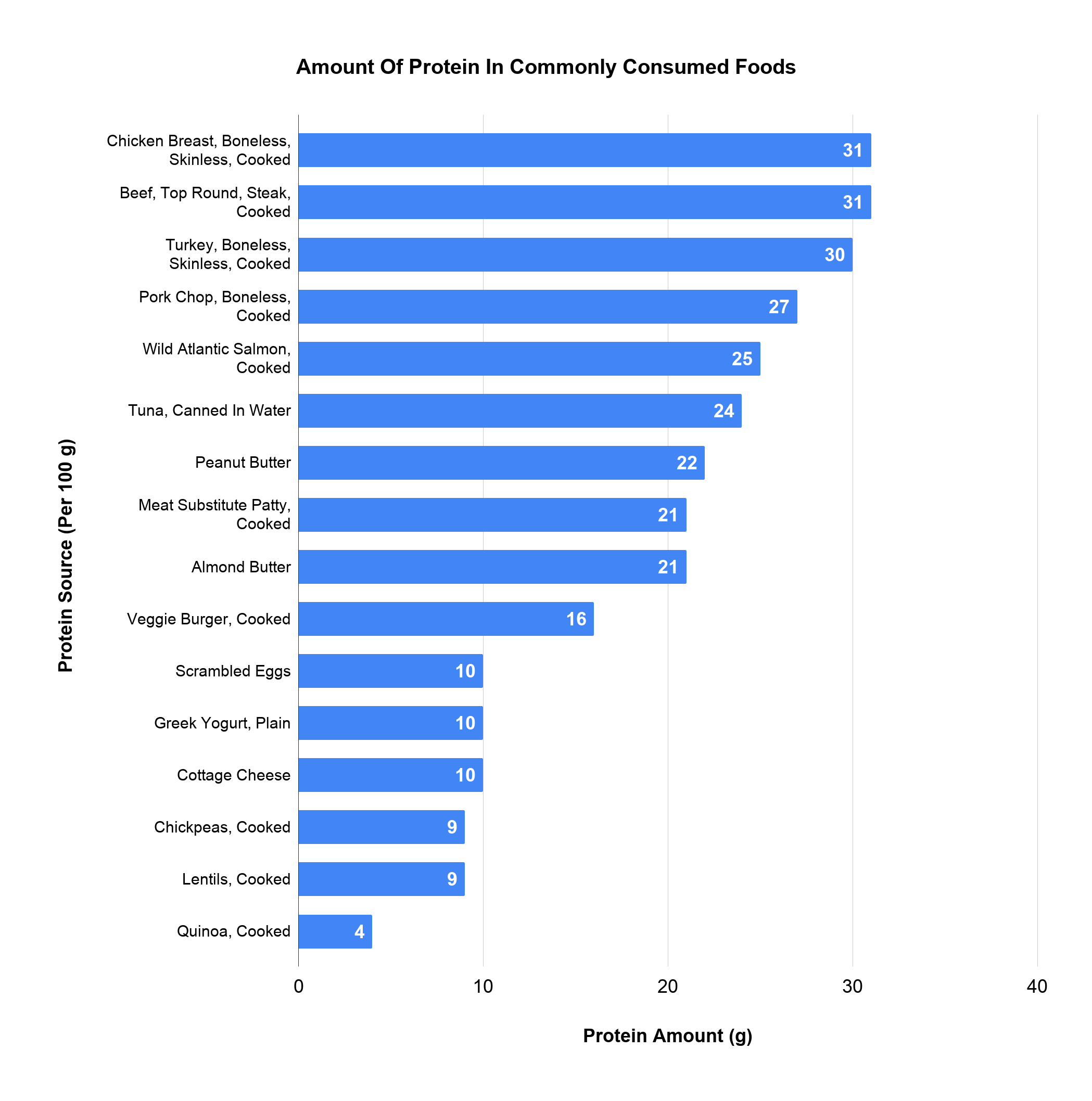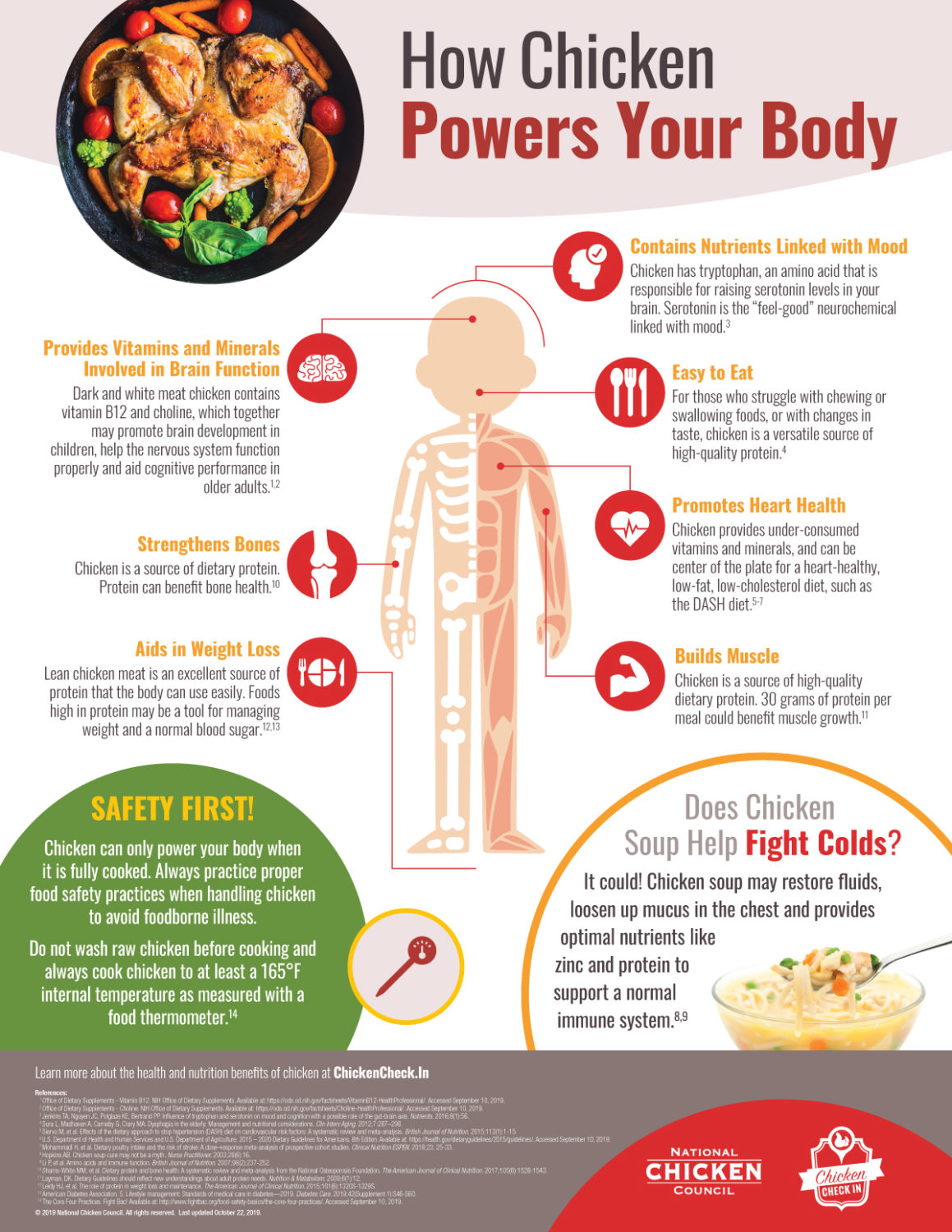Protein: How much protein is in chicken? Why is protein so important in the diet?
How much protein is in a chicken breast? A thigh? A wing? A drumstick?
- A 3½ ounce boneless, skinless chicken breast that is roasted contains about 31 grams of protein.
- A 3½ ounce chicken thigh (meat and skin), roasted has about 23 grams of protein per serving.
- A 3½ ounce chicken drumstick (meat and skin), roasted has about 23 grams of protein per serving.
- A 3½ ounce chicken wing (meat and skin), roasted has about 24 grams of protein per serving.
Source: U.S. Department of Agriculture (USDA), Agricultural Research Service. FoodData Central. www.fdc.nal.usda.gov. Updated March 2019. Accessed October 7, 2019.
Why is protein so important in the diet?
According to the United States Food and Drug Administration, protein does many things for our body – including:
- Protein is a component of every cell in the human body and is necessary for proper growth and development, especially during childhood, adolescence, and pregnancy.
- Protein helps your body build and repair cells and body tissue.
- Protein is a major part of your skin, hair, nails, muscle, bone, and internal organs. Protein is also found in almost all body fluids.
- Protein is important for many body processes, such as blood clotting, fluid balance, immune response, vision, and production of hormones and enzymes.
Source: United States Food and Drug Administration. Protein. https://www.accessdata.fda.gov/scripts/interactivenutritionfactslabel/factsheets/protein.pdf. Accessed December 4, 2019.

Can I get more protein from other sources of food?
Chicken has about the same amount of protein as other commonly consumed animal-based meats per standard serving size. However, compared to many plant-based proteins, the protein from chicken is of a higher-quality, meaning it has enough of each of the nine essential amino acids – the building blocks of protein – that are needed in the human diet. You can only get the nine essential amino acids from the foods you eat, and many plant-derived foods have a less favorable amino acid profile, which means they can be difficult to digest and not as usable in the body.
Sources:
- Marangoni F, Corsello G, Cricelli C, et al. Role of poultry meat in a balanced diet aimed at maintaining health and wellbeing: An Italian consensus document. Food Nutr Res. 2015;59:27606.
- U.S. Department of Agriculture (USDA), Agricultural Research Service. FoodData Central. www.fdc.nal.usda.gov. Updated March 2019. Accessed October 7, 2019.


